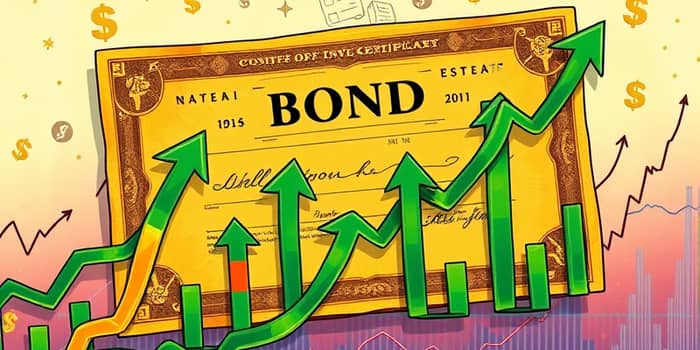
In a world where soaring consumer prices and volatile markets threaten savings and income, investors are seeking reliable avenues to protect their capital. Recently, preserve real purchasing power has become a top priority for retirees, pension funds, and conservative savers. Inflation-linked bonds, also known as linkers or ILBs, have emerged as a compelling solution.
Inflation-linked bonds are debt securities whose principal and coupon payments are adjusted to an official inflation index, such as the Consumer Price Index (CPI). Unlike conventional fixed-rate bonds, their returns keep pace with consumer prices over time, shielding investors from eroding purchasing power.
Since 2021, global inflation has persistently exceeded central bank targets. This trend has revived concerns over long-term wealth erosion. In response, cautious investors have sought assets offering hedging against rising inflation risks, driving demand for ILBs to record levels.
Heightened market volatility and unpredictable monetary policies further fuel the shift. Traditional stocks and bonds have struggled to keep pace with price growth, prompting a reassessment of portfolio strategies. As a result, inflows into inflation-protected bond funds and specialized ETFs have surged.
Inflation-linked bonds deliver real returns by periodically adjusting both principal and interest. When the inflation index rises, the bond’s face value increases. Consequently, coupon payments, calculated as a percentage of this adjusted principal, also climb.
Consider a 20-year inflation-linked bond with a $1,000 initial principal and a 2.5% coupon. With 4% annual inflation, the adjusted principal grows to approximately $2,208, and semiannual coupon payments rise to about $27.60. This dynamic structure ensures that investors principal and coupon adjust dynamically, preserving purchasing power.
However, periods of deflation can shrink both principal and coupons, introducing deflation risk. Despite this, investors typically benefit when inflation trends upward over the long term, making ILBs a powerful tool for core defensive asset allocation strategy.
Inflation-linked bonds appeal to investors who prioritize long-term stability over speculative gains. Common audiences include:
Incorporating ILBs into a diversified portfolio can provide balance during turbulent market cycles, complementing equities, real estate, and conventional fixed-income holdings.
Various issuers offer inflation-linked bonds worldwide. In the United States, Treasury Inflation-Protected Securities (TIPS) are the benchmark. The United Kingdom issues Index-Linked Gilts, while India offers Inflation Indexed Bonds (IIBs). Corporate-issuer linkers exist but are less common.
Retail investors can access these markets directly or via ETFs, which assemble diversified baskets of linkers from multiple regions. As of 2025, the global outstanding market for government ILBs exceeds $2 trillion, reflecting broad institutional demand.
While ILBs offer compelling benefits, investors should assess several risks:
Deflationary Adjustments: A sustained deflationary period can reduce both principal and coupons.
Rising Real Rates: If real interest rates climb, ILB prices may decline.
Liquidity Concerns: Some issues, especially from smaller markets or corporate issuers, can trade less frequently, widening bid-offer spreads.
To integrate inflation-linked bonds effectively, consider your inflation outlook and real-yield targets. Balance ILBs with nominal bonds to manage interest rate sensitivity. Use ETFs or pooled funds for broader diversification if direct bond purchases are impractical.
By blending linkers with traditional assets, investors can enhance portfolio resilience against inflationary shocks while maintaining flexibility.
With inflation expectations remaining volatile and monetary policy paths uncertain, demand for inflation-linked bonds is poised to stay strong. Central banks that fall behind in controlling price growth could see further inflows into linkers as investors seek reliable protection.
Even as inflation moderates, ILBs may continue to serve as a strategic hedge against unexpected price surges. For cautious investors seeking stability, this asset class offers a unique combination of income and inflation insurance, making it an essential component of a well-rounded portfolio.
In an era defined by uncertainty, inflation-linked bonds stand out as a beacon of financial security, empowering investors to weather market storms and preserve the true value of their savings.
References













